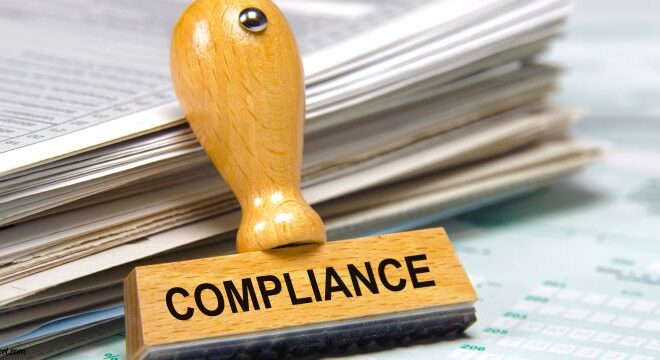
Creating a Safe and Respectful Workplace: Strategies for Effective Sexual Harassment Prevention
In workplaces, it’s crucial to prevent sexual harassment by implementing comprehensive training that fosters respect, dignity, and a safety culture. Inclusive policies, regular sensitivity training, and engagement strategies help promote diversity and discourage discrimination. Businesses must remain vigilant in creating supportive reporting structures and measuring the impact of their training initiatives to ensure continued progress toward safer and more equitable workplaces.
The Need for Sexual Harassment Prevention in the Modern Workplace
Expanding beyond mere legal compliance, creating a workplace culture that vehemently opposes sexual harassment is essential for employees’ well-being and any organization’s overall health. In modern workplaces, a comprehensive approach to a sexual harassment training course is indispensable in fostering an environment where everyone feels their dignity is respected. This guards against potential legal disputes and builds a foundation for a work environment that encourages collaboration, innovation, and mutual respect.
Best Practices for Inclusive Work Environments
Implementing clear policies and practices that reflect a commitment to diversity and respect nurtures inclusive work environments. Critical practices include:
- Conducting regular sensitivity and bias training.
- Revising hiring procedures to prevent discrimination.
- Encouraging open communication about these essential topics.
Leadership teams set the tone by living these values, and by doing so, they assure all employees that they have a crucial role in maintaining a safe and inclusive workplace. This leadership buy-in is paramount in transforming policy language into a palpable aspect of daily work life.
Sexual Harassment Training: Modalities and Effectiveness
Sexual harassment prevention training comes in various forms, including but not limited to synchronous classroom style, asynchronous e-learning modules, and interactive workshops. Ranging from standardized videos to bespoke sessions that address specific company issues and cultures, these modalities have unique merits. A tailored approach, carefully considering the workforce’s composition and needs, often yields the most significant results. Reliable data from informational outlets such as the Equal Employment Opportunity Commission (EEOC) help organizations benchmark and choose effective training paradigms that are reported to change behaviors and attitudes toward a safer workplace.
Engagement Strategies in Training Programs
Engaging in training approaches helps in breaking down complex issues into relatable and manageable concepts. Scenarios that mirror actual workplace situations, quizzes that reinforce learned concepts, and group discussions that enable the exchange of perspectives all elevate the training from a forgettable obligation to a meaningful learning experience. This level of engagement ensures that the principles of sexual harassment prevention are understood and likely implemented by employees in their workplace interactions and relationships.
Legal Perspectives and Compliance Requirements
Regulations surrounding sexual harassment training are neither static nor universal; they evolve and differ by country, state, and sometimes even industry. Comprehensive knowledge about these legal perspectives ensures businesses stay protected against non-compliance while fostering safe workplaces. For example, regulatory bodies often specify training frequency and content requirements, which could result in significant penalties if not adhered to. Resources such as the Society for Human Resource Management (SHRM) provide updates and insights that help businesses navigate and fulfill these evolving legal prerequisites.
Building a Supportive Reporting Structure
A pivotal element of practical sexual harassment training is a supportive reporting structure. It allows individuals experiencing harassment a secure and accessible platform to speak up. Such systems assure confidentiality and offer protection from retaliation, instilling trust. Clear procedures for reporting incidents and the assurance that such reports will be met with earnest investigation and appropriate action significantly contribute to a safer and more equitable workplace.
Measuring the Impact of Training Programs on Organizational Culture
Success in sexual harassment training initiatives should translate into demonstrable positive shifts in workplace culture. This can be measured through direct employee feedback, monitoring the frequency and nature of reported incidents, and assessing the overall mood and morale of the workplace. Indicators of improvement include increased awareness about the nuances of sexual harassment, options available for support and reporting, and a general sense of security at the workplace. Similar to after-action reviews in project management, these evaluations help organizations fine-tune their training efforts to yield better outcomes in the future.
Future Directions in Workplace Behavioral Training
Moving forward, sexual harassment prevention training is likely to integrate more advanced technologies and methodologies. Virtual reality (VR), augmented reality (AR), and artificial intelligence (AI) are some of the technologies that hold promise for creating immersive and personalized learning experiences. Moreover, social media and the global conversations around harassment are likely to continue influencing the content and urgency of these preventative measures. By keeping a finger on the pulse of these technological and social changes, organizations can ensure their training efforts remain relevant, resonant, and effective in combating workplace sexual harassment.



